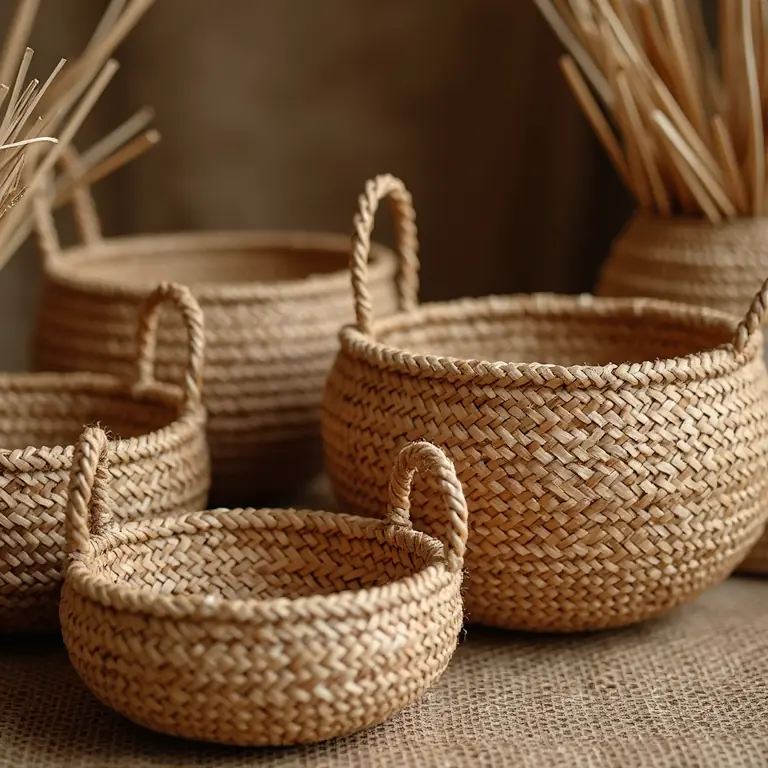Weave Wonderful Baskets: A Friendly Guide to Traditional Reed Weaving
Basket weaving is an ancient craft, practiced for millennia by cultures around the world. Beyond its practical applications – carrying, storing, and even serving – basket weaving is a deeply satisfying art form. This guide will walk you through the basics of traditional reed weaving, providing you with the knowledge and confidence to create your own beautiful and functional baskets. We’ll focus on reed, a readily available and versatile material, perfect for beginners.
Why Reed? A Material with History
Reed, specifically common reed (Phragmites australis), has been used for basketry for centuries. Its strength, flexibility, and availability made it an ideal material long before plastics or metal containers were available. Historically, reeds were harvested from marshes and riverbanks. Today, you can purchase pre-prepared reed, specifically grown for basketry, which simplifies the process significantly. Different types of reed are available, categorized by their size and how they’ve been processed, offering a wide range of possibilities for your projects.
Understanding Reed Types
Navigating the world of reed can be a little daunting at first. Here’s a breakdown of the most common types you’ll encounter:
- Flat Reed: This is the most common type for beginners. It’s been flattened and dried, making it easy to work with. Flat reed is used for the sides of baskets, creating a smooth, even surface. It comes in various widths.
- Round Reed: As the name suggests, round reed maintains its circular shape. It’s used for stakes (the upright supports of a basket), handles, borders, and sometimes weaving in with flat reed for added texture.
- Buff Reed: This is reed that has been treated with a sulfur process to make it more pliable and easier to bend. It’s often used for shaping and creating curves.
- Splints: These are wider, flat pieces of reed, often used for creating larger, more robust baskets or specific design elements.
Essential Tools for Reed Weaving
Fortunately, you don’t need a huge investment to get started. Here’s a list of essential tools:
- Reed: A selection of flat and round reed in different widths.
- Basket Knife: A specialized knife with a curved blade designed for cleanly cutting reed.
- Awl: Used for creating holes in the reed to thread stakes or other materials.
- Packing Tool: A smooth, blunt tool (like a wooden spoon handle or a dedicated packing tool) used to compress the weaving and create a tight, sturdy basket.
- Shears or Scissors: For trimming and cutting reed.
- Measuring Tape: For accurate measurements.
- Container for Soaking Reed: A bucket or tub large enough to fully submerge the reed.
- Clothespins or Clips: To hold the reed in place while weaving.
Preparing Your Reed: The Importance of Soaking
Dry reed is brittle and will break easily. Before weaving, you must soak the reed in warm water until it’s pliable. The soaking time depends on the thickness of the reed – thinner reed needs less time than thicker reed. A good rule of thumb is to soak flat reed for at least 30 minutes, and round reed for at least an hour. Check the reed frequently; it should be flexible enough to bend without cracking. Keep a spray bottle of water handy during weaving to re-moisten the reed as needed.
Basic Weaving Techniques
Let’s dive into the fundamental weaving techniques. We’ll focus on round base weaving, which is a common starting point for many baskets.
Creating the Base
- Stake Placement: Start with a set of round reed stakes. The number of stakes will determine the size and shape of your basket. Arrange the stakes in a circle, evenly spaced.
- Weaving the Round: Take a piece of flat reed and begin weaving it over and under the stakes, working in a circular motion. This is called the ‘under-over’ weave.
- Maintaining Tension: Keep the reed taut as you weave, using your packing tool to gently push the rows together.
- Adding Reed: When you run out of reed, overlap the end with the beginning of a new piece, tucking the end neatly under the weave.
- Expanding the Base: Continue weaving, gradually increasing the distance between the stakes to create a wider base. This can be done by gently pushing the stakes outwards as you weave.
Uprising the Stakes
Once your base is the desired size, it’s time to ‘upset’ the stakes – bend them upwards to form the sides of the basket. This is a crucial step and requires a gentle touch. Soak the base thoroughly to make the stakes more pliable. Carefully bend each stake upwards, holding it in place while you weave the first few rows of the sides. Use clothespins or clips to help hold the stakes in the upright position.
Weaving the Sides
Continue the ‘under-over’ weave, now working vertically to build the sides of the basket. Maintain consistent tension and use your packing tool to compress the weaving. As you weave, you can experiment with different patterns and techniques. For example, you could use a ‘waling’ technique, where you weave two or more strands of reed together for added strength and visual interest.
Finishing the Rim
The rim of the basket needs to be finished to prevent unraveling and to provide a clean, polished look. There are several ways to finish the rim:
- Fold-Over Rim: Fold the stakes over the last woven row and tuck them into the weaving.
- Bound Rim: Use a separate piece of round reed to bind the stakes together, creating a decorative and secure rim.
- Woven Rim: Continue weaving for a few rows, creating a woven border.
Advanced Techniques to Explore
Once you’ve mastered the basic techniques, you can explore more advanced methods to add complexity and artistry to your baskets:
- Twining: Using two or more strands of reed woven together.
- Plaiting: Interweaving three or more strands of reed.
- Coiling: Wrapping reed around a core material.
- Adding Color: Using dyed reed or incorporating other materials like ribbons or beads.
- Shaping: Using molds or forms to create baskets with specific shapes.
Troubleshooting Common Problems
Basket weaving, like any craft, can present challenges. Here are some common problems and how to address them:
- Reed Breaking: Ensure the reed is adequately soaked. Handle it gently, especially when bending.
- Uneven Weaving: Pay attention to tension and use your packing tool consistently.
- Stakes Slipping: Ensure the stakes are securely anchored at the base and that the weaving is tight.
- Basket Losing Shape: Use consistent tension and support the basket as you weave.
Maintaining Your Baskets
With proper care, your handwoven baskets can last for years. Here are a few tips:
- Avoid Moisture: While reed is natural, prolonged exposure to moisture can weaken it.
- Gentle Cleaning: Dust your baskets regularly with a soft brush. If necessary, wipe them down with a damp cloth.
- Storage: Store your baskets in a dry, well-ventilated area.
Beyond Baskets: Exploring Related Crafts
The skills you learn in reed weaving can be applied to other crafts. If you enjoy working with your hands and creating beautiful objects, you might also be interested in clock restoration, knife sharpening, or even building a rain barrel. These crafts share a similar emphasis on patience, precision, and a connection to traditional techniques.
Here’s a helpful video demonstrating how to make something with reed:
Resources for Further Learning
- Basketry Associations: Many regions have basketry associations that offer workshops, classes, and networking opportunities.
- Online Tutorials: YouTube and other online platforms offer a wealth of basket weaving tutorials.
- Books: Numerous books are dedicated to basket weaving, covering a wide range of techniques and styles.
Embrace the Process
Basket weaving is a journey of learning and discovery. Don’t be afraid to experiment, make mistakes, and develop your own unique style. The most important thing is to enjoy the process of creating something beautiful and functional with your own two hands. With patience and practice, you’ll be weaving wonderful baskets in no time!


Discussion about this post